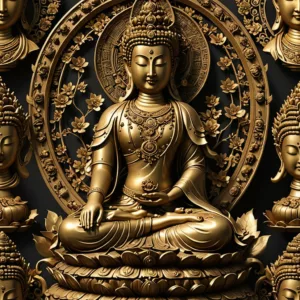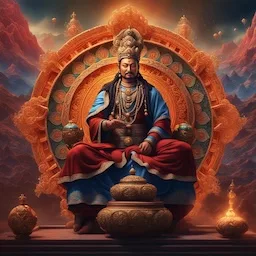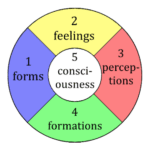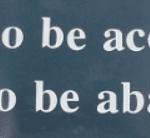A Buddhism comprehensive guide
In Buddhism, the 2 accumulations of wisdom (jnana / Sherab) and merit (sonam) are the essential causes needed to accomplish the path of enlightenment. Merit is a specific karma, or force that allows one to transcend karma altogether. Wisdom is insight of varying levels into the nature of reality. Both accumulations have multiple methods.
Table of Contents
Bodies of merit and Diligence
Bodies of Merit and Diligence refer typically to organizations, institutions, or individuals who have demonstrated exceptional commitment, effort, and success in their respective fields. Merit represents the recognition of one’s abilities, achievements, and contributions, often signifying a level of excellence that sets them apart from others. Diligence, on the other hand, signifies a steadfast devotion to a task, demonstrating perseverance, resilience, and a strong work ethic. These two aspects combined often result in significant accomplishments and advancements, whether in academia, professional fields, or personal endeavors. Therefore, bodies of merit and diligence are often highly respected and influential, serving as inspiring examples and role models for others to aspire towards.
Merit / Sonam: Fuel of spiritual progress

Merit is a karma-like force, or fuel, that pushes or helps one on the path of dharma. It is the commitment, even need, to continue the path of learning and meditation. It is a storehouse of
1) actions that benefit oneself and others toward attaining liberation and
2) meditation to generate sonam.
Wisdom: Meaning of sherab / yeshe in Tibetan Buddhism
In Buddhism, sherab is the Tibetan word for wisdom of highest knowledge, while the related word yeshe means the wisdom to directly perceive the nature of reality. Sherab is often associated more with conceptual knowledge, and yeshe more with primordial wisdom, or nonceptual direct perception.
Sherab means understanding and yeshe means seeing the selflessness of the person, the emptiness of all phenomena, the insight that all phenomena are mind-created, the space-like nature, the non-conceptual certainty, and the luminous awareness essence that ultimately guides all beings.
What is the path of accumulation in Buddhism?
Merit (gewa) and Wisdom (jnana), the two accumulations accomplished on the path, can be seen in different ways. Gewa is often the first accumulation, both on the path and in a particular practice. However, the 2 accumulations are commonly done in a cyclical nature, with gewa used as a sort of fuel to gain wisdom and understanding. When that is fulfilled or blocked, the yogi will often refresh their merit through various practices and activities.
The accumulation of merit
Gewa (punya) in Buddhism can be seen in multiple ways. One is simply the intense longing for enlightenment. Continually turning the mind toward the Buddha and the teachings, realizing with faith that these are more important than anything else, generates vast merit. That’s because gewa is the force of karma, the use of relative reality to accomplish the path.
In Buddhism, merit is a special type of karma. Karma typically is either good, bad, or neutral. Good karma pushes the mindstream to rebirth in the higher realms, bad karma obviously pushes one lower into suffering. But karma wears out. In the higher realms, it may last an extraordinarily long time, but eventually it ends. Neutral karma does neither, but does tend to create habits. The example is scratching – it’s not good or bad from an ethical or virtuous standpoint, but it is habitual, so it blocks awakening to some extent.
Merit is not exactly classified as karma, so it may be erroneous to call it karma in a technical sense. However, it functions in a similar manner. It pushes the being who has it. According to Sakyong Mipham Rinpoche, referring to Siddhartha as he moved toward buddhahood:
The Buddha’s merit was driving him toward enlightenment.
Karma drives one through samsara. Merit is a type of best karma that drives one out of samsara and exhausts karma altogether. It liberates the person, who has so much power and strength in their path that they have no other choice but to continue toward enlightenment. At the level of the Buddha, he had little choice. His habit of pursuing enlightenment was so strong, his virtue so deeply developed, his insight so ready to spring forth, that every obstacle he encountered was simply pushed aside by the vast power of his merit.
This method has been systematized by the Buddha. The practitioner engages in the paramitas, the transcendent virtues or paramitas: generosity, discipline, patience, diligence, meditation, and wisdom. Practicing generosity or any of the first 5 paramitas specifically generates merit. The last paramita is the accumulation of wisdom. Meditation belongs to both accumulations depending on the method of practice.
How to meditate like a yogi
and enter profound samadhi
6 Paramitas
- Practicing generosity (dhana) takes 3 forms:
- Offering material possessions and wealth
- Offering fearlessness
- Offering the Dharma and guiding beings to liberation
- Practicing discipline (shila), one turns the mind toward the benefit of others to create a situation where they can travel the path to enlightenment. The practitioner makes efforts on an individual level or at the level of creating enlightened society, a society where the good of all is natural and free-flowing, where spiritual endeavors are genuinely valued.
- With patience, the practitioner engages in non-agression and equanimity, the state of remaining uperturbed. One approach is to engage in difficult situations, contemplating them in meditation or actually entering in life to provoke the negative emotion. Then you notice it directly and perceive the insubstantial nature (Mahayana), luminous essence (higher yanas), or as the deity (Mahayoga-yana). The emotion must be seen quickly and released quickly without acting upon it or increasing the mental tendency toward it.
- In exertion or diligence (tsultrim), one continually strengthens the desire to apply the dharma in life and to repeatedly and continuously make the aspiration to never give up on the path of dharma.
- Meditational accumulation of merit:
This is a large topic and the primary means of accumulation of merit in the Vajrayana. Meditative methods allows for vastly greater and more rapid accumulation of merit than other methods. In meditation, accumulation occurs primarily through visualization in relation to the deity. Because the deity is understood to be an actual Buddha, an emanation of pure wisdom without any of the negative traits or defilements of samsara, simply meditating clearly on the deity and including the meaning of the visualized aspects accumulates enormous quantities of merit. It purifies the mind.
Accompanying this with various offerings, praises, refuge and bodhisattva vows, accumulations of mantra, and acts of karmic purification multiply this immeasurably. Refuge and bodhisattva vows function to guide and direct the overall meaning of the practice. To say, why are we doing this? To attain liberation from samsara through refuge in the Buddha and to liberate others through bodhicitta.



You may know someone who does these types of practices and yet still has plenty of klesha, negative emotions and a somewhat degraded view. This is not a sign that the practice is not working or does not work. (These statements are different). It’s a sign of the oceanic volume of past karma and that samsara is extremely powerful. It takes a long time and a very focused practice.
The person may have poor meditative skills, allowing an excessively wandering mind. Simply mouthing mantras or half-hearted visualizations won’t do much. Practicing with incorrect views (political goals, material success, etc) will typically backfire or be useless. Having poor or absent motivation, just going through the motions, without genuine longing is far less effective.
Just showing up with any genuine desire will generate some merit, however, so it is important in practice to simply do your best and release anxiety about it. Relaxing into the practice is key to all practices. That being said, practices can generate tremendous energy when strongly engaged with a powerful concentration. It is a balancing act of generating tremendous energy and relaxing within that state. As the Buddha said, “Not to tight and not too loose.”

Flow, the profound mental state, also called Peak Performance, can be attained with meditation and can be ‘triggered’ at will, with enough discipline. Guide to Flow Mastery will teach you how.
Body, Speech and Mind
A key instruction to accumulating gewa in meditation is – Involve all aspect of your being: Body, Speech and Mind.
- Body – Maintain an erect, but not rigid posture. Self-sustaining (no chair backs) and neither forward nor backward leaning.
- Don’t fidget. Be still.
- Crossed legs or one on top of the other. Lotus is fine, but the pain is typically too much for most people, hence too distracting.
- Hands on thighs, relaxed
- Chin slightly tucked
- Eyes softly gazing at the correct angle for the practice (down for shamatha, ahead for vipashyana).
- Set the view of seeking liberation or enlightenment and the body will naturally accumulate merit and purify karma.
- Self-visualization dramatically enhances this process, seeing the body as light purifying the excessive reality of phenomena.
- Speech
- In simple meditations, this is done by meditating on the breath, seeing it as relaxed, open, insubstantial, and constantly changing.
- Connect with the life essence of breath as it penetrates the body.
- Allow the breath to cleanse the speech of negative acts (angry, divisive, lying, or gossipy speech)
- In Vajrayana, speech is purified through mantra. This can be done in formal meditation or while walking around. Use a mala to focus the practice and do complete malas.
- Om Mani Padme Hum is the mantra of compassion: It means Om Jewel Lotus Hum
- Om Ah Hum Vajra Guru Padma Siddhi Hum is a devotional mantra specifically focused on Padmasambhava Guru Rinpoche.
- Repeat the 7-line supplication of Padmasambhava also
- Any genuine Buddhist mantra, properly recited, will generate merit and purify speech.
- Mind – the key aspect. Without mind, accumulations will be far slower
- Focused and on point
- Fully engaged
- Faith and belief (generates tremendous merit by themselves) by thinking, ‘The Buddha (or other deity) is before me,’ but not in an overly theistic sense. Leave behind the ideas of Buddha being there or not. Like watching a movie and getting very involved.
Seeing the world as manifesting Guru Rinpoche, Tara, Buddha, Aviloketeshvara, and so forth generates tremendous merit. It’s critical to do so without fixity and reifying the deity, without trippiness, without thinking of the deity as truly existent or as non-existent, in other words, free from the 4 extremes. This purifies the mind of ordinary conceptions of reality. It is critical to see the deity as made out of clear light, the nature of mind. This is self-refining as the path continues. It becomes deeper and clearer what pure awareness is, what clear light means.
At early stages, when we first begin working with this, it is crucial to know we are not creating a physical object of Buddha. We want to avoid recreating the solidity of the universe. We have more than enough seeming physical reality and in fact, purifying the tyrannical focus on physical reality is a huge part of generating merit. It’s important to address and have belief in immaterial manifestations.
This is a key obstacle for Westerners. Eastern Buddhists are raised to believe in unseen beings and phenomena. They do not have this problem and most teachers do not understand how deep it is for Westerners. Because of an upbringing which promotes ‘Science’ above all other views, most Westerners struggle to believe in immaterial phenomena. Overcoming this view is essential to accumulating merit for a number of reasons.
First, merit itself is an immaterial phenomena. If you don’t believe in such things, it would be impossible to accumulate it. Second, the reification of the physical world is virtually a synonym for karmic entrapment and samsara itself. There is more to it, of course, but that is a fundamental point to work with.
We’re trying to purify the concepts with which the mind currently views the world. This is the deepest, most intractable layer of karma. Indeed, it is what pushes karma into the next life and causes rebirth.
Purify the conceptual mind by seeing the deity as a wisdom being and as not truly existent. Very important – you are not truly existent either. This is where merit crosses into wisdom. Seeing the lack of true existence is the key gateway to wisdom.







